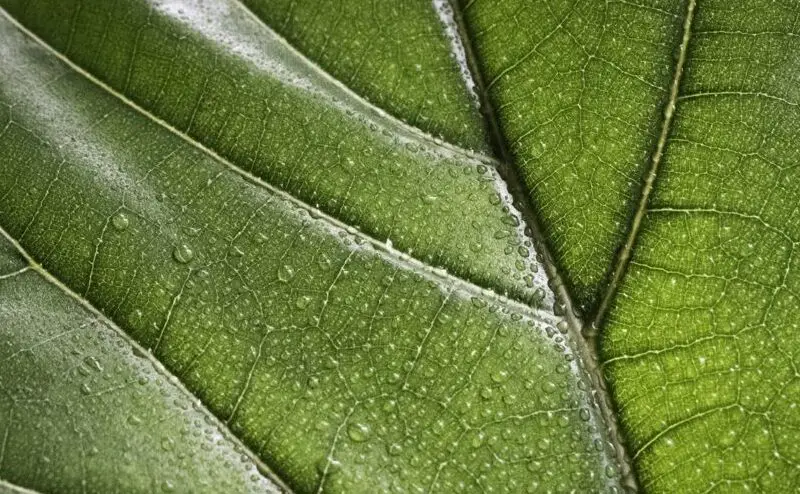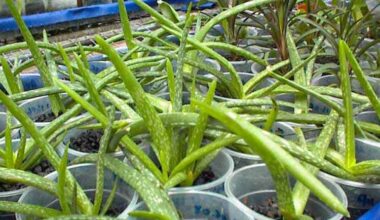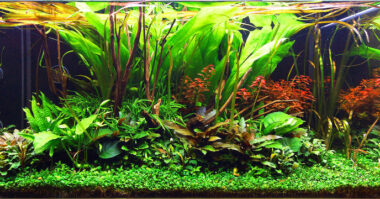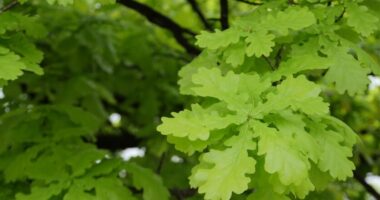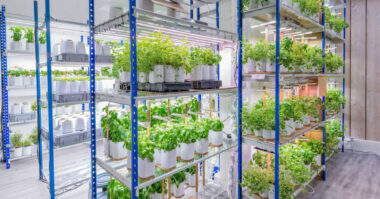Chlorophylls are the green pigments of plants capable of photosynthesis. They are also found in various bacteria that also use light energy.
Contents
What is chlorophyll?
Chlorophyll is the pigment that gives plants their green color. It allows the realization of photosynthesis, which is the process by which plants produce oxygen through water and sunlight.
It is nicknamed green blood because its structure is close to human hemoglobin. The major difference is that chlorophyll carries magnesium atoms, whereas in humans it is iron.
Do all plants contain chlorophyll?
If we consider that mushrooms are not plants, yes. There are also some exceptions that we will see later. This is why all plants are green. However, fungi, are often called “non-chlorophyllous plants”, which prevents us from saying, in theory, that all plants contain chlorophyll.
Fungi are therefore unable to use the energy of light to synthesize their organic matter from mineral substances. They are therefore dependent on dead organic matter or living organisms. They are said to be heterotrophic.
A fungus is the “fruit” of an underground plant that has no leaves, no stems, no roots and is made up only of tangled white filaments called mycelium. When you squeeze the mushroom in your hand when it is ripe, a fine powder escapes. Each grain is a spore.
What is the purpose of a chlorophyll-free plant?
First we must understand the meaning of “serving” in an ecological context. Biological organisms occupy an ecological niche defined by selective pressures caused by other organisms and their common environment.
Chlorophyll-free plants, such as Monotropa uniflora, are often parasites. This plant is actually a parasite of a symbiosis between a tree and a fungus. The fungus supplies minerals to the tree from the soil and, in return, the tree supplies sugars to the fungus. Monotropa steals these nutrients from the fungus and provides nothing in return (parasitism).
By obtaining its nutrients from the fungus, Monotropa no longer requires photosynthesis and therefore there is no selective pressure to maintain chlorophyll production. This parasitic behavior allows it to grow in the shade of the tree canopy, where photosynthetic plants would not receive enough light to survive.
But why do parasites persist in nature? Monotropa “serves” the bees by giving them nectar. In return, the bees disperse Monotropa’s pollen. In some cases, parasites can benefit an ecological niche by limiting the reproduction of certain dominant species.
In other cases, the parasites serve no discernible purpose, but their footprint on the species they parasitize is small enough to allow them to persist – they are globally “selectively neutral”.
Why consume chlorophyll?
Chlorophyll stimulates the production of hemoglobin and red blood cells
As its nickname suggests, chlorophyll is an interesting weapon to stimulate the production of hemoglobin and red blood cells in people with anemia or those who have suffered cardiovascular accidents. “Chlorophyll is also appreciated by trekking enthusiasts in high mountains, who need to bring a better oxygenation to their cells and therefore to their tissues”, says the phytotherapist.
Researchers have suggested that wheatgrass juice (germinated wheat seed) containing 70% chlorophyll could be an interesting aid in treating pathologies related to hemoglobin deficiency such as anemia or thalassemia.
Chlorophyll boosts immune defenses
This benefit follows from the one previously mentioned since we know that “80% of our immune system resides in our intestine”, says the phytotherapists. This is why a balanced intestinal flora will allow a better immune defense against all types of germs. In addition, the body will be faster to defend itself thanks to its better oxygenation, allowing to contain the proliferation of bacteria.
Where to find chlorophyll?
Chlorophyll is found in all leafy plants. It is therefore essential to eat green vegetables regularly and in sufficient quantities, giving preference to raw products or products that have been steamed for a short period of time.
Here are some examples of vegetables that are particularly rich in chlorophyll.
- Spinach ;
- Green salad;
- Asparagus;
- Cabbage with a special mention for broccoli ;
- Celery.
Summary
Chlorophyll is the pigment responsible for the green coloration of plants. It plays a fundamental role in photosynthesis and, as such, chlorophyll is the key element inducing life on the surface of our earth.
Photosynthesis is the bio-energetic process by which green plants transform the carbon dioxide in the earth’s atmosphere into oxygen, which is essential for the life of animals in general and humans in particular.
Hence the growing concern about deforestation.
Most plants benefit from this pigment, which is what allows them to transform the energy in the air to live.
